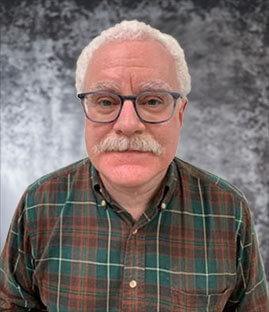Why Non-Optical Engineers Should Care About Ray Tracing and Light Behavior
This new series from our in-house expert, Dr. Dale Buralli, bridges the gap between your specialty and professional optics design.
In the world of product development, every engineer—from mechanical to systems—faces the challenge of integrating multiple disciplines to create functional, innovative solutions. For those who may not have a background in optics, concepts like ray tracing, Fresnel equations, and electromagnetic wave behavior might seem distant or overly specialized. However, gaining understanding of these principles can significantly impact the manufacturability and speed of bringing your products to market.
The Invisible Hand of Optics in Product Design
Optics influence a vast array of industries, including automotive, consumer electronics, medical devices, and defense. Whether designing a heads-up display, a diagnostic medical imaging device, or an advanced wearable camera system, understanding how light interacts with materials can:
- Improve System Efficiency: Light reflected at each optical interface—as described by Fresnel equations—represents energy loss. For instance, a four-lens system with eight air-polymer interfaces can lose up to 28% of incident light to reflection. For non-optical engineers designing power-constrained devices like wearable sensors or portable medical tools, these losses translate to reduced performance or higher power requirements.
- Enhance Image Quality: Fresnel reflections not only waste light but also contribute to reduced contrast and ghost images. These artifacts can undermine the clarity of displays or imaging systems, impacting user experience. Non-optical engineers can benefit from recognizing the need for optical coatings or material choices to mitigate these effects.
- Enable Better Materials Choices: Selecting polymers or glasses with favorable optical properties—and knowing when to rely on specialists for thin-film coatings—is critical. This knowledge ensures that components meet functional and cost constraints while delivering superior performance.
Bridging the Gap Between Theory and Application
For non-optical engineers, you don’t need a PhD in optics to utilize these insights effectively and immediately. Here’s how understanding foundational concepts can empower your work and make you the all-star on your team:
- Ray Tracing: Ray tracing isn’t just for rendering 3D animations; it’s a tool to predict how light will propagate through your system. This helps in identifying potential inefficiencies or distortions before physical prototyping, thus saving you money and time during your R&D process.
- Maxwell’s Equations: While the math behind light as an electromagnetic wave may seem daunting, the practical takeaway is understanding reflection and transmission behaviors. This knowledge ensures you can communicate effectively with optical specialists to address issues like signal loss or stray light when you suspect that might be an end-user issue. Need to learn about the actual Equations? Check Wikipedia.
- Fresnel Equations: Knowing that 4-5% of light reflects at each interface helps you quantify energy loss and prioritize solutions such as anti-reflective coatings or design adjustments.
Unlock Your Company’s Advancement with Optical Insights from Apollo Optical Systems
By integrating optical expertise EARLY into your product development cycle, you can prevent costly redesigns, improve performance, and deliver exceptional results to your end users.
 I hope you enjoyed reading this blog post.
I hope you enjoyed reading this blog post.
If you want my team to bring precision and innovation to your next project, click here.
About the Author
Dr. Dale Buralli has been a driving force in optical innovation for over two decades. With a PhD in optics from the University of Rochester and a career spanning academia and industry, Dr. Buralli has helped countless teams bridge the gap between optical theory and real-world applications. As Apollo Optical’s chief scientist and an adjunct professor at the University of Rochester, his passion lies in empowering engineers to leverage optics for breakthrough designs.


